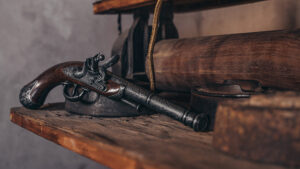
Understanding the Value of Replica Weapon Sets
Replica weapon sets are more than collectible items; they are a gateway to history, storytelling, and creative expression. Whether you’re a history buff, a collector, or a fan of classic cinema, replica weapons offer a unique way to connect with iconic eras and characters. In this blog, we’ll explore why replica weapon sets are more than just decorative pieces and how they offer a meaningful connection to history and craftsmanship. What Makes Replica Weapon Sets Special? Replica weapon sets stand out because they combine historical accuracy with modern craftsmanship. Each piece is carefully designed to mirror the original weapons it is inspired by, from flintlock pistols of the 18th century to legendary Old West revolvers. These replicas capture every detail, from the intricate engravings to the feel of the grip. The value of replica guns extends beyond their appearance. They offer a safe way to enjoy and display iconic firearms without the risks of handling real ones, making them perfect for educational purposes, reenactments, and movie props. The Role of Replica Guns in Collecting and Education For collectors, replica guns are valuable additions that combine beauty and functionality. Many collectors seek out sets that represent specific historical periods, such as Civil War muskets or World War II rifles. Owning these replicas allows enthusiasts to tell the stories behind the weapons, sparking interest in history and craftsmanship. Replica weapon sets are also excellent educational tools. Museums, schools, and reenactment groups often use them to teach others about the history of warfare, design innovation, and the people who used these weapons. Since they’re non-functional, they provide a hands-on experience without the safety concerns of real firearms. Bringing History to Life in Your Home Decorating with replica weapon sets can transform your space into a tribute to history. Imagine a Civil War musket









